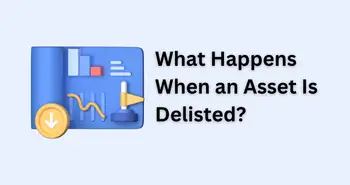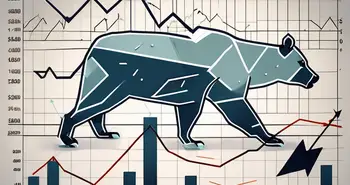Article Contents
Short Selling Explained: A Contrarian’s Guide

Everyone knows the mantra “buy low, sell high”. It’s a logical operation that makes sense to investors, speculators, and traders of all levels because it's comparable to traditional barter. It doesn’t matter if you don’t even understand what a stock really is – everyone understands buying something for less and selling it for more. However, shorting is always puzzling.
And then you hear about short selling, and the great success of contrarian traders.
What is short selling?
The simple explanation doesn't help much: the investor profits from the decline of a price. This leaves the curious novice with a lot of questions, how can you make money if the price is falling?
To understand short-selling in it’s entirety we have to draw parallels to trade, arbitrage, and a few anecdotes on good business skill.
Let’s start off with an example of short selling before we turn to the financial markets.
Imagine you’re walking to a neighboring country-side town where you plan to go to the marketplace to buy groceries. On your way you see a broken-down truck on the side of the road that is full of bicycles. You make nothing of it at the time. As you get to the town square an hour later you see that there’s only one market stand selling bicycles for an outrageous price of $1000, and the seller only has four bikes in stock. You instantly realize that the truck you saw must have been carrying at least 40 bikes and is on its way here. If the price of bicycles is only so high because the supply is so low, then what do you think will happen when the truck rolls into town and floods the market with bikes? The price of a bike will surely drop.
Here’s what you do:
Before the truck can make it into town you go to the shopkeeper and tell them:
“Look, let me borrow a bike from you. I will pay you an interest of $50 per day that you let me have this bike.” The shopkeeper gives you the bike, and you hand over $50 for the first day. However, you then turn back to all of the people in the market and yell “I am selling this bike!” – you might even have to sell it for $900 to make sure you can get rid of it fast. Now you have $900 in your pocket, and you owe the shopkeeper a bike. The truck you saw rolls into town and starts selling bicycles left and right, there’s so many that the supply exceeds the demand and you are able to buy an identical bike for $500, which you now go and return to the shopkeeper.
So, you spent $50 to borrow the bike, which you sold straight away for $900, and then replaced the borrowed bike for $500. You have successfully profited $350.
Just through a few savvy business transactions you were able to come out on top even in a market where the price was falling, simply by borrowing and replacing. Even though you were able to make a nice profit, you have to understand that you took some risk.
What if the truck you saw coming down the road wasn’t actually heading to the town, and you borrowed and sold the bike only to never be able to replace it and continue paying premiums forever? That’s a loss.
How do you short a stock ?
Falling price is just the other side of the same coin in finance. Traditionally, when you want to short sell a stock you borrow the company shares through your brokerage, sell them at the current market price, and pocket the difference. Once the market price has decreased enough, you repurchase the shares from the market at the lower price – returning them to the brokerage (called covering a short).
Why should you go short on a financial asset?
Going short can be a strategic play in hedging your risks or can be an activist move. When you go short you are expressing a bearish stance against that company or asset, and declaring that the market price of that asset is too high and does not adequately reflect its true value. There are a number of reasons why this may be true:
- Speculative trading has forced the price of a stock to increase beyond any reasonable valuation of its future cashflows.
- The sector, which the company is operating in, is due for a turnaround (cyclical or not) and you expect that the company won’t be doing as well as they are now.
- You expect many investors to sell their shares at a given price level or after an announcement. You're anticipating the price of the stock to drop from the selling pressure.
- You not only have no faith in the company, but you hold a grudge against them – perhaps you even consider that their business practices are unethical and you’re just waiting for everyone else to realize the same.
- Something in the company has changed and you are no longer confident in their abilities to generate cashflows at their current rate.
- You expect that an economic shift will occur that may impact your portfolio return and you choose to short several stocks as a protective hedge.
While short selling opens up the investor to a world of market possibilities, it’s important to note that just because you can earn a return from falling prices, doesn’t necessarily mean that it’s easy or worth it in many markets.
One of the biggest challenges that short-sellers face is handling fees, commissions, and interest. Brokers will generally charge a higher premium for short-selling, if they allow it at all. Additionally, you might not be the only investor interested in shorting a popular stock.
A company stock that lends itself more to speculative investing behavior, or with weak fundamentals, will generally have more contrarian investors willing to short. Meaning: when the demand to borrow a security is high, then the interest expense on borrowing is high as well.
High Short Interest is a website that catalogues the short interest across major exchanges. It's a great tool for simply assessing how bearish Wall Street is towards particular companies.
Stocks like Tesla (TSLA), Tilray (TLRY), GameStop (GME), and Beyond Meat (BYND) all have high short-interest rates. Lots of traders are borrowing the stock to short it.
It becomes a race against the clock for many investors from the day they borrow the stock and sell it at market price – every day they accrue further interest expense.
Not only do short sellers want the stock to plummet as fast as possible due to interest expenses, but they also need it to fall as far as possible.
Here's a quick test:
- John Smith, manager of XYZ Capital, shorts $TSLA at it’s all-time-high of $386 – lets assume no interest expense for a moment.
- Robert Miller, manager of ABC Capital, shorts $TSLA after it has fallen to $100 a share.
- Later Elon Musk announces Tesla Motor’s bankruptcy, and the stock crashes to $0.
Who earned a higher return? John or Robert?
The reality is that they both earned the same return on their short; 100%. When you short a stock, it can go down as far as $0.
What would happen to John and Robert if $TSLA stock shot up to $500 a share? Who would lose more on their short?
John Smith would lose 30% on his position, but Robert Miller would be down a whopping 500% on his trade!
The problem with short selling is that while your upside is limited to only 100%, your losses can be infinite.
Note: Professional traders and hedge funds use short selling to manage risk, however they don’t do it with outright equity positions, the employ derivative instruments such as options and futures to hedge their positions.
This is part of the reason why mutual funds and many financial intermediaries are forbidden from shorting stock and are long only. Shorting a stock passively can be incredibly risky.
When Short Selling Fails.
Many activist hedge fund investors have been burned in trying to realize gains from short positions, often with their positions failing dramatically.
In normal market circumstances short selling can be difficult. Once you enter the position you not only hope the asset loses value quickly – as to avoid incurring additional interest expenses – but also that the asset doesn’t shoot up in value. If you’re caught in a short where the asset is increasing then your position is losing value even faster. Every day that the stock goes up, your short position loses value and you continue to pay interest.
So, what happens when we remove interest expense? When you trade without any interest expense or commissions this means that shorting an asset becomes as easy as buying a stock. Eliminating interest expenses and shorting fees gives you more flexibility in managing your risk. This is a fundamental change to how you're able to trade.
Day traders can now short any asset across multiple markets, all under the roof of Morpher's platform. This opens up a world of opportunities for new trading strategies that could never work before, especially with smaller accounts.
Morpher has no fees or commissions, and supports short selling at no interest expense. Additionally, we offer you institutional-grade tools in the opportunity to short exotic instruments such a housing price index, and even mortgage-backed securities such as the 5/1-Year Adjustable Rate Mortgage average.
How to short sell on Morpher?
Shorting an asset on Morpher is really easy. Just enter the amount you want to invest in your short, and click sell.


Disclaimer: All investments involve risk, and the past performance of a security, industry, sector, market, financial product, trading strategy, or individual’s trading does not guarantee future results or returns. Investors are fully responsible for any investment decisions they make. Such decisions should be based solely on an evaluation of their financial circumstances, investment objectives, risk tolerance, and liquidity needs. This post does not constitute investment advice.

Painless trading for everyone
Hundreds of markets all in one place - Apple, Bitcoin, Gold, Watches, NFTs, Sneakers and so much more.

Painless trading for everyone
Hundreds of markets all in one place - Apple, Bitcoin, Gold, Watches, NFTs, Sneakers and so much more.









